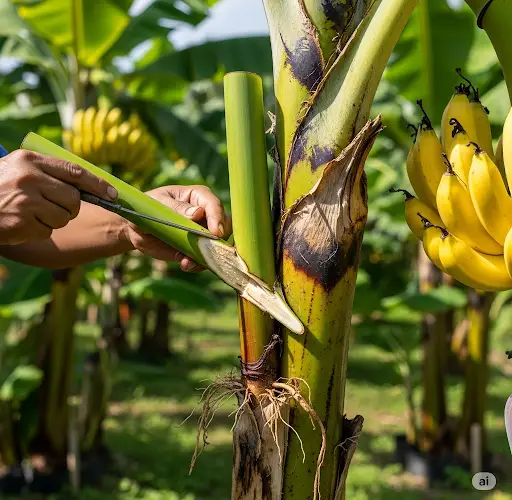Tree grafting is an essential technique in gardening and agriculture, used to propagate trees, improve fruit production, and preserve plant varieties. While traditional grafting methods rely on clean cuts, secure binding, and sometimes commercial rooting hormones or sealing waxes, there’s a surprising household item that can make your grafting more successful—a banana.
Using a banana in tree grafting may sound unconventional, but it has become a popular natural trick among gardeners seeking more organic, affordable, and eco-friendly methods. Bananas are packed with beneficial nutrients and enzymes that can help stimulate cell repair and growth, improve moisture retention, and reduce the risk of graft failure.
Why Use Bananas in Tree Grafting?
Bananas contain several key elements that contribute to plant health and healing during the grafting process:
-
Potassium and Phosphorus: These are crucial nutrients for root development and energy transfer in plant cells.
-
Natural Sugars and Enzymes: Bananas are rich in plant-available sugars and enzymes that can promote faster cell regeneration at the graft site.
-
Moisture Retention: The banana’s soft texture helps retain moisture, creating a humid environment ideal for graft healing.
-
Antioxidants: These support the plant in resisting stress during the delicate post-grafting period.
When used strategically, banana can serve as a natural healing pad and nutrient booster that helps grafts take hold faster and more effectively.
Materials You’ll Need
To try this banana grafting method, gather the following items:
-
A healthy tree for the rootstock
-
A compatible scion (a young branch or shoot from another tree)
-
A ripe banana
-
A sharp grafting knife or pruning shears
-
Grafting tape or plastic wrap
-
A clean cloth or alcohol for sterilizing tools
This technique works particularly well with fruit trees such as apples, pears, citrus, plums, and avocados.
How to Graft a Tree Using a Banana
Step 1: Prepare the Scion and Rootstock
Choose a strong, disease-free branch from the donor tree for your scion. It should be 4–6 inches long with 2–3 buds. For the rootstock, select a healthy young tree or branch. Make a clean, precise cut where the graft will be inserted. The most common methods for beginners include cleft grafting and whip-and-tongue grafting.
Step 2: Cut a Small Slice of Banana
Take a ripe banana and cut a thin slice—about 2 inches long and half an inch thick. You can remove the peel or keep it on. The idea is to place this banana piece between the scion and rootstock as a natural barrier and nutrient source.
Step 3: Insert the Banana Between Graft Cuts
Place the banana slice at the graft site, sandwiching it between the scion and the rootstock. Ensure that the cambium layers (the thin green layer just under the bark) of both the scion and rootstock align as closely as possible. The banana acts as a cushion and promotes better sap flow and healing.
Step 4: Secure the Graft
Wrap the entire graft area firmly with grafting tape, plant tie, or plastic wrap. The wrapping should hold the scion and rootstock in tight contact, including the banana slice in between, while still allowing air circulation.
Step 5: Monitor and Maintain
Keep the grafted area shaded and avoid overwatering the tree. In 2–4 weeks, the graft should start to take. You can remove or loosen the tape once the union is firm and new growth appears.
Tips for Success
-
Use fresh, ripe bananas—they contain more active enzymes than green ones.
-
Sanitize your knife before and after each cut to prevent disease.
-
Check alignment of cambium layers—this is critical to graft success.
-
Use grafting wax or natural tree resin to seal large wounds or prevent drying if the weather is hot and dry.
-
Label your grafts if you’re trying multiple varieties or experimenting.
Expected Results and Benefits
By incorporating banana into your grafting process, you’re giving the tree a small but effective boost in nutrients and hydration. Many gardeners report improved graft union strength, reduced graft shock, and quicker visible growth compared to traditional grafting alone. Additionally, the banana acts as a natural bridge between the two plant tissues, encouraging smoother integration.
Final Thoughts
Tree grafting doesn’t always require expensive tools or chemical aids. Sometimes, a simple fruit like a banana can make all the difference. Whether you’re trying to propagate your favorite apple variety or rejuvenate an old tree with a new branch, this natural trick offers a low-cost, environmentally friendly solution. It’s a great method for beginners and seasoned gardeners alike who are open to experimenting with nature’s own resources.
Try grafting with a banana and see how this humble fruit can help your trees thrive.



